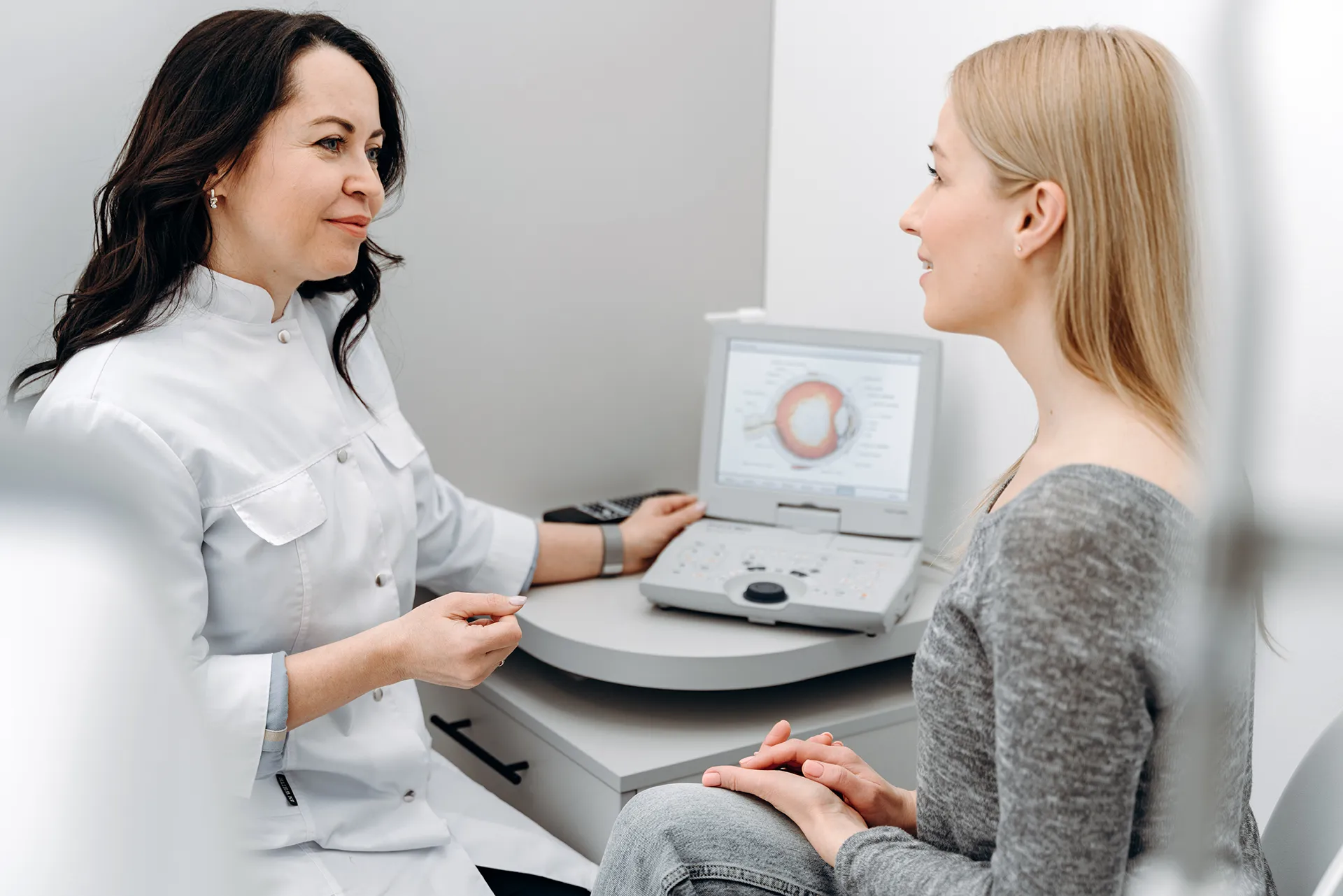A popular method of breast reconstruction. Good cosmetic results can be obtained without operating on healthy tissue. The surgery is short and recovery quick. After mastectomy, a prosthetic implant is inserted under the pectoral muscle to create the shape of the breast. In most women, the muscle and overlying skin are too tight to allow a full-size implant to be inserted immediately so a tissue expander is often needed.
A tissue expander is a saline (sterile salt-water) filled prosthesis attached to an inflation port. Additional saline is gradually added in the out-patient clinics over 3 to 6 months following surgery, increasing the volume of the expander to match the volume of the remaining natural breast. As the volume of the expander increases, the muscle and overlying skin gently expand to provide enough space for the final implant. When the required volume is attained, the breast is allowed to settle for a few months, and then, if required, a further operation is performed to replace the saline filled expander with a permanent silicone breast implant.
A silicone implant is often used for the final reconstruction, as it gives a softer, more natural feel to the breast. Silicone implants are commonly used in the U.K. and are safe. In the past, there have been concerns about rupture of implants and silicone leakage. In 1998, the Silicone Gel Breast Implants Independent Review Group conducted an investigation into the safety of silicone implants and found no relationship between silicone gel implants and immune reactions or systemic illness.
Most implants used today have a roughened surface to minimise the risk of capsular contracture, the most common complication of implant surgery. Another option for implant reconstruction is the use of a permanent expandable implant. This consists of a front layer of silicone gel and an expandable pocket for the saline at the back of the implant. These give cosmetic results comparable with silicone-only implants and have the advantage of only requiring one operation.

Mentor implants (www.mentormedical.co.uk) carry robust and long term data for their safety and durability as well as a lifetime product replacement policy.
Disadvantages
- Cannot create a large or droopy breast.
- The breast may appear fuller in the upper half compared with the natural side, cannot provide any additional skin to fill the hole created when the nipple is removed. The defect is sutured leaving a straight-line scar in a horizontal direction.
Advantages
- The simplest type of reconstruction, avoiding major surgery and surgery to healthy tissue elsewhere in the body.
- A good option for bilateral reconstruction, where excellent symmetry is possible with this technique.
Who is it suitable for
- Women who would like a permanent reconstruction but who would like the most minor type of surgery.
- Women who are not opposed to having prosthetic material in their bodies.
- Women who don't mind going through a few months of tissue expansion.
- Women who wish to avoid an operation to healthy tissue.
- Small-breasted women who are seeking larger breasts and would also like an implant in the healthy breast.
- Women undergoing bilateral mastectomy and reconstruction.
- Women who cannot endure a long operation because of ill-health.


Operation Details
The patient is placed on her back and the surgeon performs the mastectomy. When this has been completed, the surgeon creates a pocket under the pectoral muscle in which the implant can lie. When the size of the pocket is correct, the surgeon inserts the implant and covers it with the muscle. Adjustments to the position and size of the implant pocket are made and, in the case of a tissue expander, it may be partially inflated. The wounds are then closed, generally with dissolving sutures. A drain may be inserted.
Complications you should be aware of
Infection (5%)
This ranges from a superficial wound infection, easily treated with antibiotics, to an infection of the implant if one is used. Implant infections are especially troublesome as, generally, the implant must be removed to fully treat the infection, and re-inserted at a later date.
Bleeding (5%)
Although any bleeding points are cauterised during the procedure, it is possible that you may develop a collection of blood under the skin. Very occasionally, this can become infected or need to be let out by returning to theatre and re-opening the wound.
Seroma
This is a very common complication. If fluid continues to be produced after the drains are removed, it will collect under the skin and may become uncomfortable, but it can be easily and painlessly removed by sliding a needle through the scar on your back taking the fluid off with a syringe.
Capsular Contracture
This is the commonest complication following implant reconstruction. In about 10% of women, it can become hard and contract against the implant, causing discomfort and a change in shape of the breast. Capsule contraction is more common after radiotherapy. If capsular contraction is a problem, the contracted capsule can be surgically removed to restore the breast shape.
Need for revision surgery
In a significant number of patients there will be a need to change the implant at some point and this can be due to patients size and shape changing with age, visibility of the implant or a capsular contracture. The need for future revisions is an important factor to consider.

Awarded the Certificate of Excellence 2019 from I Want Great Care

Awarded the Certificate of Excellence 2018 from I Want Great Care





